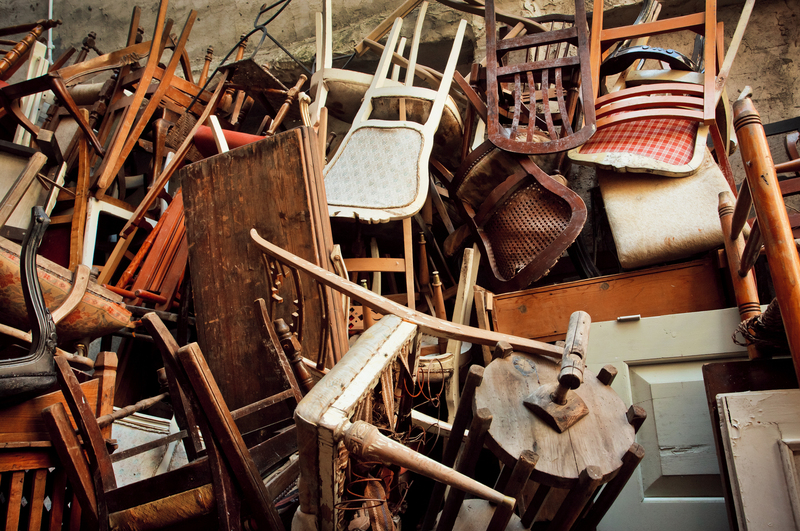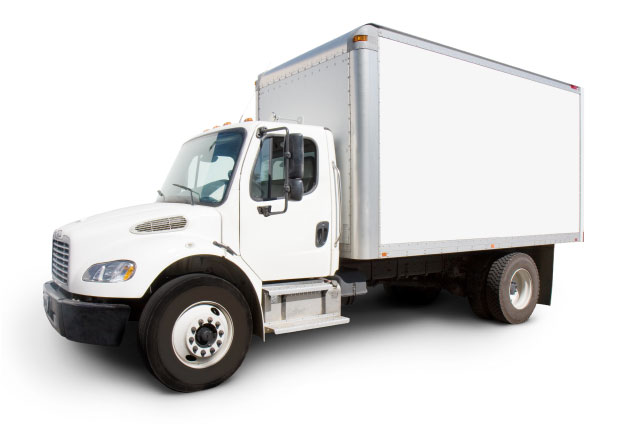Store Your Sofa Safely: Expert Recommendations
Posted on 18/05/2025
Store Your Sofa Safely: Expert Recommendations
Proper sofa storage is vital if you want to preserve your furniture's condition, prolong its lifespan, and save money on costly repairs or replacements. Whether you're moving, renovating, or simply decluttering, you must know how to store your sofa safely. This expertly crafted guide covers all you need to know, with comprehensive tips, precautions, and best practices for sofa storage.
Why Storing Your Sofa Correctly Matters
Many people underestimate the risks involved in improper sofa storage. The consequences can range from unsightly stains to irreversible structural damage. Here's why safe sofa storage is crucial:
- Prevents mold, mildew, and pest infestations - A damp or dirty storage area can spell disaster for upholstered furniture.
- Protects from physical damage - Scratches, tears, and dents may occur if your sofa isn't shielded or secured properly.
- Preserves appearance and comfort - Cushions, springs, and fabrics can all deteriorate if not cared for correctly.
By learning how to keep your sofa safe in storage, you can maintain its value and avoid headaches when you're ready to use it again.

Step-by-Step Guide to Storing Your Sofa Safely
1. Clean and Prep Your Sofa
Before setting your sofa aside, cleaning is fundamental. Dirty cushions and fabrics can attract vermin and breed odors or stains.
- Vacuum all surfaces - Use a brush attachment to remove dust, crumbs, and pet hair from cushions, crevices, and seams.
- Spot-clean stains - Gently blot (don't rub!) any stains with a fabric-appropriate cleaner or mild soapy water. For leather sofas, use a recommended leather cleaner and conditioner.
- Allow to dry completely - Moisture is the enemy. Ensure your sofa is thoroughly air-dried before covering or moving.
- Disassemble if possible - Remove legs, cushions, or other detachable parts to make handling and storage easier. Keep screws and hardware in a labeled bag.
2. Choose the Right Storage Location
The best storage for sofas is a place that's clean, dry, and secure:
- Climate control is key - Ideally, select a storage unit or room that's kept between 50-70?F and protected from humidity.
- Elevate your sofa - Never place a sofa directly on the floor, especially concrete. Use wooden pallets or blocks to raise it and improve air circulation.
- Avoid sunlight and heat sources - UV rays and heat vents can fade or crack upholstery, particularly leather.
- Security matters - If using a storage facility, check for surveillance, restricted access, and insurance options.
3. Wrap and Protect Your Sofa
Proper wrapping is essential to safeguard your sofa in storage against dust, pests, and accidental knocks.
- Use furniture blankets or pads - Wrap every section of the sofa with thick blankets or pads. Secure with packing tape (never apply tape directly to fabric or leather!) or plastic wrap for added security.
- Avoid full plastic covers - While plastic wrap is water-resistant, wrapping your sofa entirely in plastic can trap moisture and cause mildew. If you must use plastic, leave breathing space or use perforated covers designed for furniture.
- Wrap detachable parts separately - Cushions, legs, and hardware should be placed in labeled containers or bags.
4. Position Your Sofa in Storage Correctly
The position of your sofa in storage can impact its condition:
- Store upright - If possible, place the sofa in its natural upright position. Storing on its end or side may warp frames and cushions.
- Avoid stacking objects - Don't stack heavy boxes or items on the sofa, as shapes can deform, springs break, and upholstery tear.
- Leave space on all sides - This encourages airflow and allows you to inspect your sofa periodically.
Expert Recommendations for Different Types of Sofas
Storing Fabric Sofas
- Always dry-clean or vacuum thoroughly before storage.
- Use breathable covers, such as cotton sheets, to minimize dust yet prevent moisture accumulation.
- Consider using desiccant packs nearby to absorb excess moisture in the storage environment.
Storing Leather Sofas
- Condition leather after cleaning to prevent cracking.
- Keep away from heat sources or areas prone to temperature fluctuations.
- Choose a ventilated storage space to keep the leather supple and fresh.
- Cover with soft blankets; avoid plastic which can make leather "sweat."
Storing Sectionals & Recliners
- Disassemble where possible. Store each section with padding to prevent scratches and impressions.
- Label all pieces and attach hardware packets to mainframe for easy reassembly.
- Wrap moving parts securely to avoid motion damage during transport or storage.
Common Mistakes to Avoid in Sofa Storage
- Ignoring moisture risks - Even minimal dampness can cause devastating mold or rot.
- Failing to prep the storage area - Clean, ventilate, and pest-proof your storage space before moving your sofa in.
- Storing in a hurry - Rushed storage often leads to items being stacked, bent, or poorly wrapped.
- Using harsh cleaning chemicals - These can degrade fabrics or fade colors; always spot-test first.
- Forgetting insurance - Consider renters' or storage insurance to protect against theft, fire, or water damage.
Extra Tips: How to Move and Store Your Sofa Safely
- Measure doorways and hallways before moving your sofa. This saves time and prevents accidental rips or dings.
- Work in teams - Sofas are heavy and unwieldy; two or more people will make maneuvering safer.
- Use sofa sliders or dollies to protect floors and your back.
- Secure in transit - If you're transporting the sofa, strap it securely in the truck to prevent shifting.
How Long Can You Store a Sofa?
With the right conditions, you can store your sofa long-term without significant wear and tear. Key factors that determine the safe duration include:
- Climate control: Furniture stored in climate-controlled units can safely remain untouched for years.
- Preparation quality: Cleaning and covering make a huge difference in short and long-term storage outcomes.
- Storage area maintenance: Regularly check for leaks, pests, and changing humidity levels.
For best results, inspect your sofa every 2-3 months during storage and address any issues immediately.
Should You Hire Professional Sofa Storage Services?
For valuable or irreplaceable sofas, consider using a professional furniture storage service. The benefits include:
- Expert handling: Pros have the training and equipment to move and wrap furniture without damage.
- Secure, climate-controlled facilities: These greatly lower the risks of moisture, temperature swings, and pests.
- Insurance coverage: Most reputable services offer robust coverage for stored items.
The cost of professional storage is typically balanced by the peace of mind and reduced risk of damage - especially for antiques and designer sofas.

FAQs: Safe Sofa Storage
Can I store my sofa in a garage?
It's possible, but not ideal. Most garages aren't climate-controlled, meaning temperatures and humidity fluctuate significantly. If you must use a garage, elevate your sofa, use desiccant packs, and wrap it with breathable covers. Inspect regularly to catch any issues early.
Is it safe to store my sofa outdoors with a tarp?
This is not recommended. Outdoor storage exposes your sofa to rain, temperature changes, insects, and UV rays--even with a tarp. The best way to store a sofa safely is indoors, ideally in a climate-controlled space.
What should I do when removing my sofa from storage?
- Unwrap and inspect for damage
- Vacuum and clean as needed
- Reassemble carefully
- Let it air out - some odors dissipate after a day or two
In Summary: How to Store Your Sofa Safely Like an Expert
Storing your sofa safely is an investment in your home's comfort and style. To summarize the expert advice:
- Clean and fully dry your sofa before storage
- Disassemble and wrap pieces individually
- Choose a climate-controlled, secure storage location
- Protect with breathable covers and padding
- Store upright without burdensome stacked items
- Check in periodically for best results
By following these guidelines, you'll make sure your sofa looks and feels just as inviting when you bring it out of storage as the day you put it away. If you're looking for more professional help or specialized storage services, seek reputable providers who understand safe sofa storage thoroughly. Your furniture--and your future self--will thank you!





